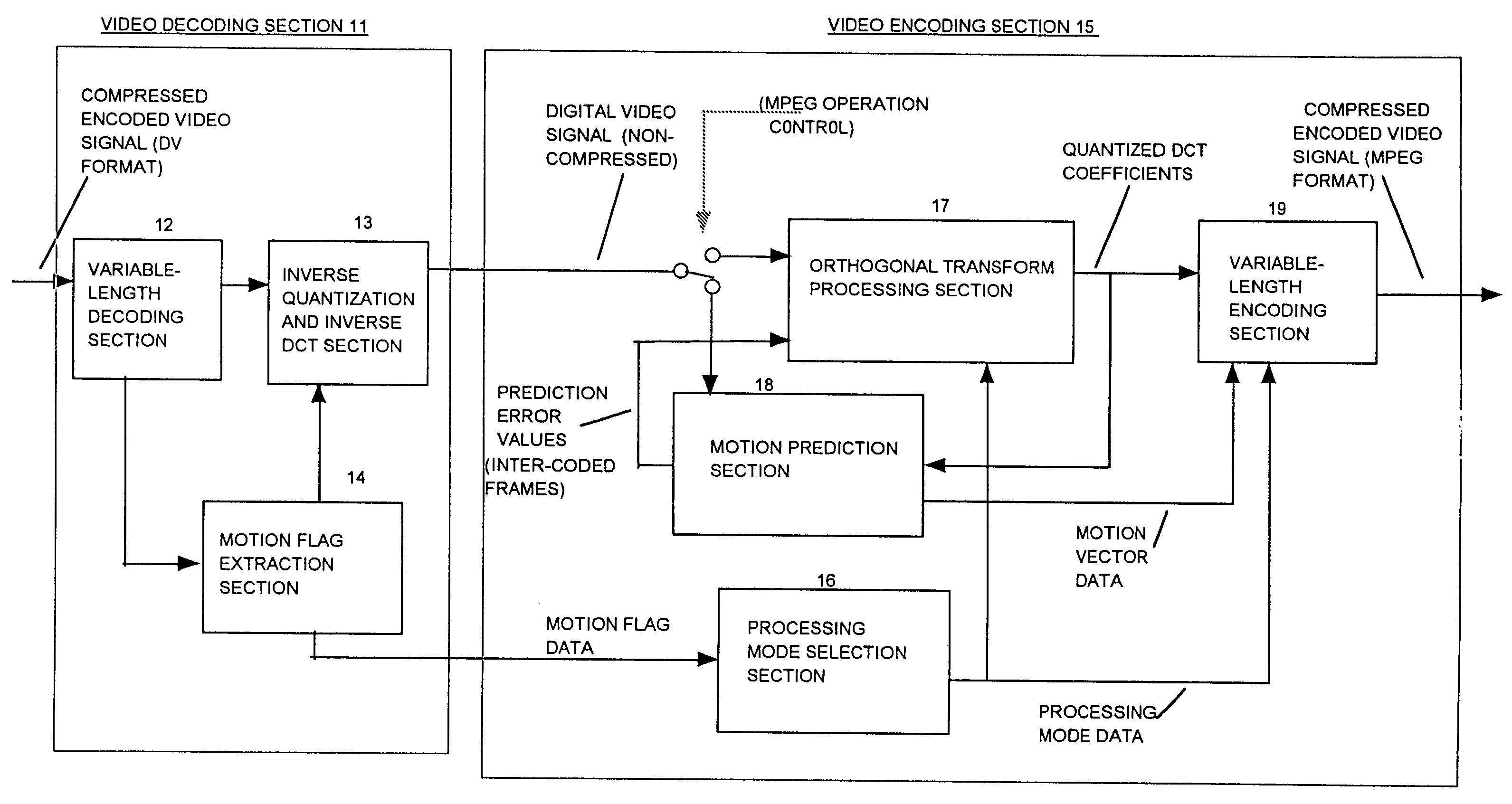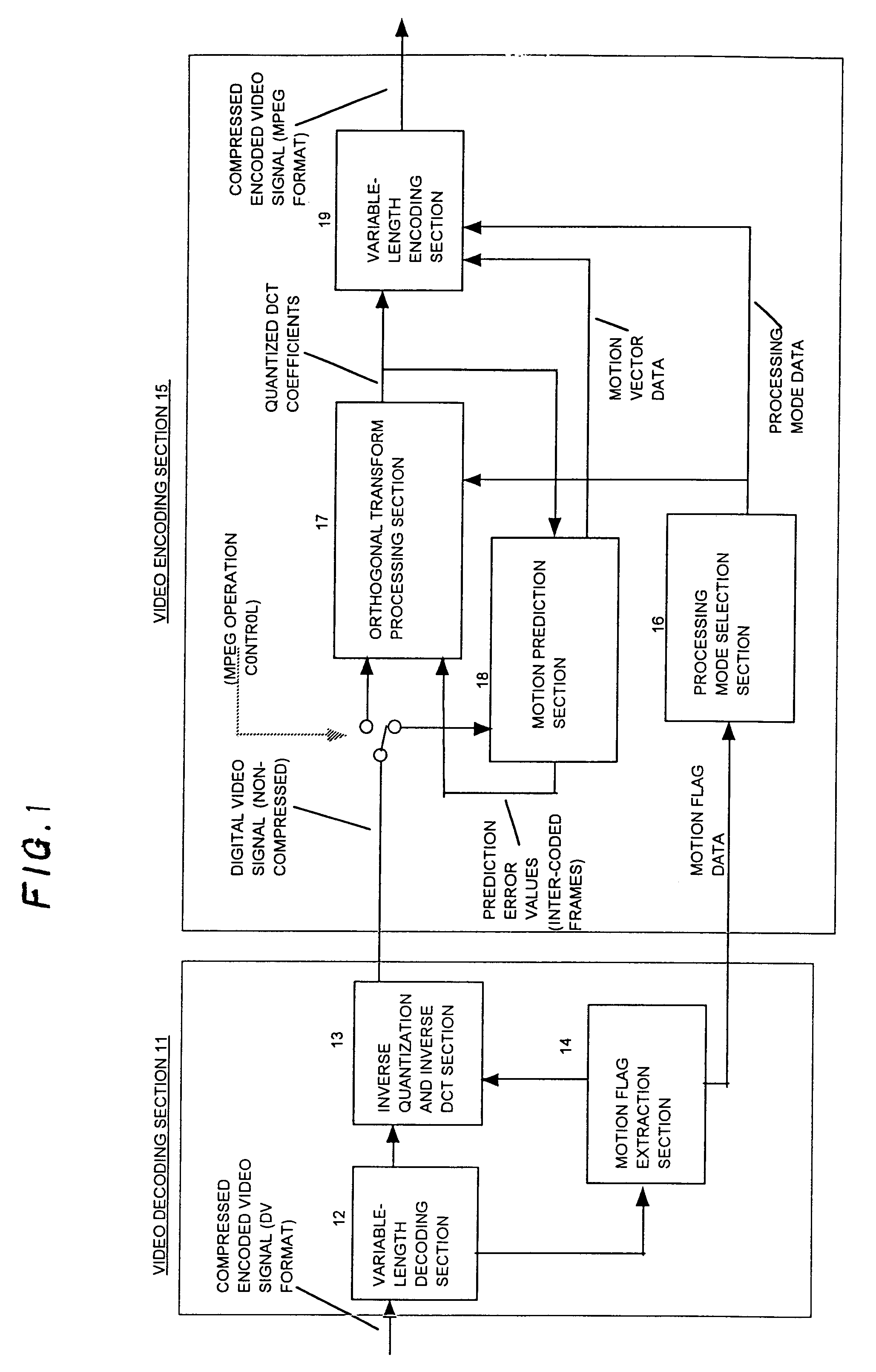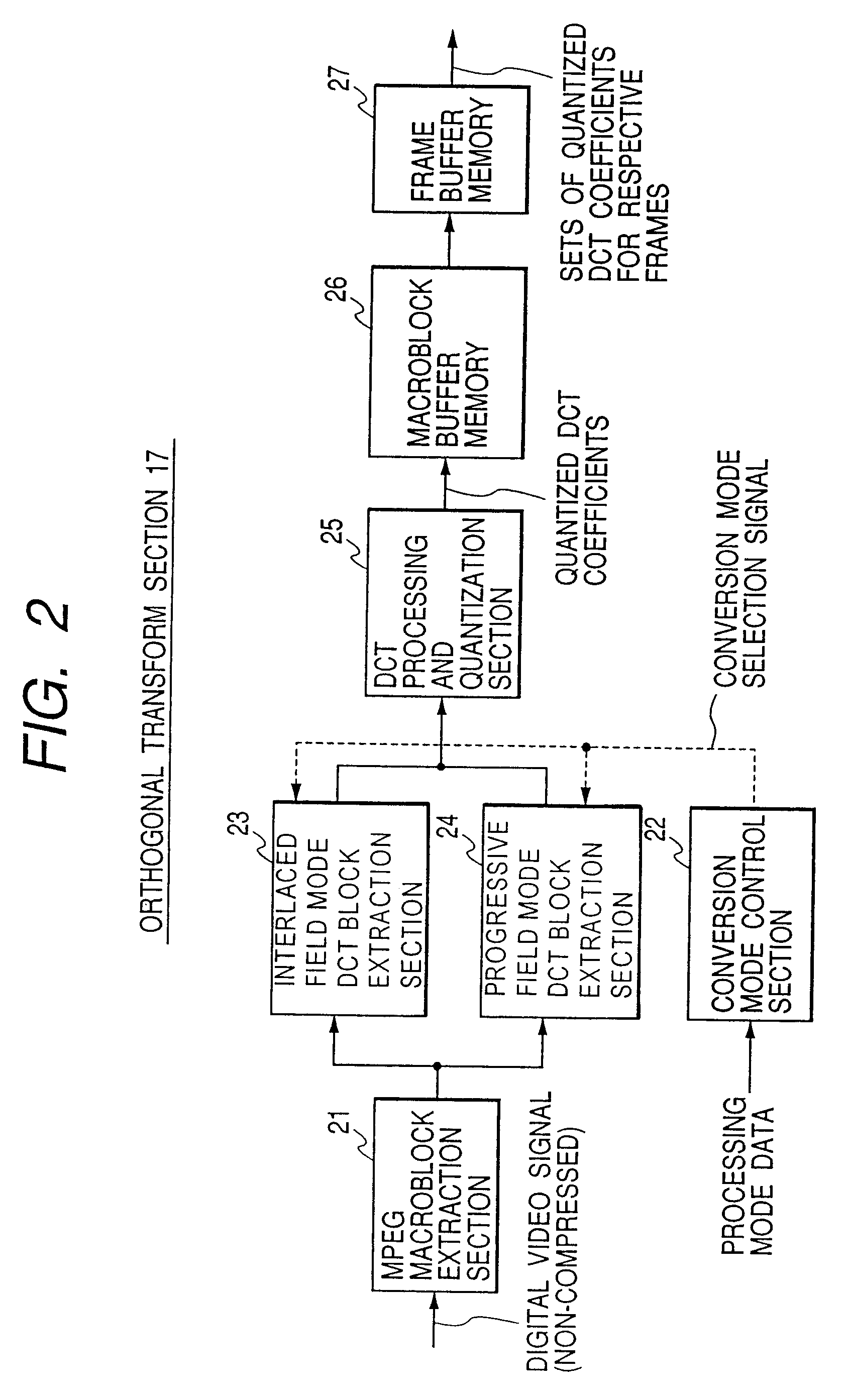Apparatus and method for efficient conversion of DV (digital video) format encoded video data into MPEG format encoded video data by utilizing motion flag information contained in the DV data
- Summary
- Abstract
- Description
- Claims
- Application Information
AI Technical Summary
Problems solved by technology
Method used
Image
Examples
first embodiment
FIG. 1 is a general system block diagram showing a first embodiment of a video signal conversion apparatus according to the present invention. With this embodiment, the DCT processing which is executed as part of MPEG encoding is adaptively changed between interlaced-field mode processing and progressive-field mode processing, in accordance with the motion flag data obtained from the DV encoded data. With interlaced-field mode DCT processing, each 8.times.8 value DCT block is made up of values obtained from 8 successive lines of an interlaced-field frame, while with progressive-field mode DCT processing, each DCT block is obtained from only the odd-numbered or only the even-numbered lines of an interlaced-field frame, i.e. from the first field or from the second field of that frame. Adaptive selection of interlaced-field mode DCT processing or progressive-field mode DCT processing is executed in units of macroblocks.
In FIG. 1, a video decoding section 11 serves to convert an input c...
second embodiment
A second embodiment of a video signal conversion apparatus according to the present invention will be described, whereby motion flags contained in the DV encoded video data are utilized to adaptively control changeover between two types of motion prediction processing that can be applied to a frame or macroblock that is to be inter-coded. Specifically, changeover between interlaced-field mode motion prediction and progressive-field mode motion prediction is controlled, in units of macroblocks.
FIG. 4 is a general system block diagram of this embodiment, in which system blocks corresponding to those of the first embodiment of FIG. 1 are indicated by identical reference numerals to those of FIG. 1. This embodiment differs from the first embodiment in that the processing mode data which are produced by the processing mode selection section 16 of a video encoding section 15 for each of respective macroblocks of a frame of the non-compressed video signal, based on the states of the set of...
third embodiment
A third embodiment of a video signal conversion apparatus according to the present invention will be described in the following. With this embodiment, selection of either interlaced-field mode or progressive-field mode MPEG compression encoding can be executed in units of pictures (i.e. entire interlaced-field frames or entire fields), based on the states of the motion flags contained in the DV data. As shown in FIG. 7, the video encoding section 15 of this embodiment consists of a picture formation section 51 and a processing mode selection section 16, together with an orthogonal transform processing section 17, a motion prediction section 18 and a variable-length encoding section 19. The orthogonal transform processing section 17 and motion prediction section 18 perform the usual MPEG encoding processing functions i.e., functioning, for each picture of the input signal that is to be intra-coded, to convert the respective macroblocks of that picture into corresponding sets of quant...
PUM
 Login to View More
Login to View More Abstract
Description
Claims
Application Information
 Login to View More
Login to View More - R&D
- Intellectual Property
- Life Sciences
- Materials
- Tech Scout
- Unparalleled Data Quality
- Higher Quality Content
- 60% Fewer Hallucinations
Browse by: Latest US Patents, China's latest patents, Technical Efficacy Thesaurus, Application Domain, Technology Topic, Popular Technical Reports.
© 2025 PatSnap. All rights reserved.Legal|Privacy policy|Modern Slavery Act Transparency Statement|Sitemap|About US| Contact US: help@patsnap.com



